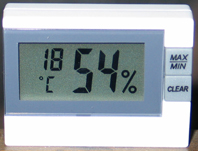Care instructions for paintings
The presentation of artworks, within a home environment, under museum conditions is seldom feasible and certainly not worthwhile. However, by observing simple guidelines, one can reach the needed conditions under which a stable and long-term preservation of artworks become possible.
The following article offers very pragmatic and helpful guidelines for dealing with artworks inside living quarters, sheds light on materials’ requirements, causalities and points to potential dangers.
Temperature, Air Humidity and Lighting
Canvas paintings react in a highly sensitive manner to changes in its surrounding environment. Changing temperature, coupled with an increase or decrease in air humidity lead to direct contraction and/or expansion of the paint materials. The spontaneity of such movements and its visible effects become more pronounced in paintings on canvas with a limited pliability, where a heated background during the day leads to further stress. One may visualize the technical structure of a painting, with a textile base covered with several layers of primer, isolation coatings, signature, painting surface with different levels of coatings and
protective suffusion and varnish, so it becomes evident how enormous is the weight under which each single component stands.
Each material of the total composite has, according to its structure and age, the ability to move matters and to create a process of compensation. Through this individually defined pliability coefficients, materials can, in a worst case scenario, exhibit contradictory effects, and based on the situation, the severity and the frequency, it can develop permanent and destructive damages: cracks can progressively set in, clods and unevenness in the painting follow frequently.
For more information and individual consultation click here: pracher@kunstgutachter.de
Standard Guidelines
The most common values offered for lighting, temperature and air humidity required for paintings are a maximum of 150 Lux for lighting (light volume per square meter), temperature range of 18 to 20 degrees Celsius and air humidity of 55-60% (relative humidity) are not really without exceptions and applicable to all canvas paintings, but they offer fair standard values for a household environment.
In practical applications this means that a painting should not be exposed to a too warm, too dry or overlighted conditions. Most importantly, a frequent change of climatic environment should be avoided. A painting should not be placed in direct proximity to a heating system, a chimney, a house door, a balcony or a window. Direct humidity sources, such as a coffeemaker, a waterboiler or a bath room need not be forgotten.
During the heated winter season, room air should be additionally humidified through water containers or humid plants. Small air humidifiers are already available for under 100€. Simple tools for measuring temperature and relative humidity are available for around 20 Euro. With a size of 4×5 centimeters, one can easily place such tiny readers where paintings are hung.
The aging process of any painting depends, in addition to the abovementioned factors, on air humidity’s penetration of the painted layer and the canvas. The wall where the painting is hung is, in general, always colder and more humid than the air within the room, with the exception of treated walls. So, if a painting is placed directly on the wall, the result will be a permanent exchange between the colder and more humid air behind the painting and the warmer and drier air in the room. Figuratively speaking, a continuous air draft exists through the cracks within the primer, the painted layer and the protective overcoat.
Such air draft provokes material movements ending with cracks and fissures. These will become dirty, and more pronounced, due to dust particles. The canvas degenerates under the accelerated oxidation resulting from the increased oxygen flow. On the backside, the cracking developed on the front side shows up as dark contours. The canvas tends to become brittle and fragile.
In the case of older paintings, such reaction will be visible due to the everchanging cracking of the painted layer, along the frame’s shank. In the areas where the back of the canvas was enforced by support and cleat frames, the humidity diffusion’s effect will not take place in its full force. The cracks here will be considerably less.
This effect can result due to the application of a protective back support. The back side of the painting is fixed to the frame by means of an acidfree cardboard. This arrangement offers additional protection against dirt accumulation as well as other external factors such as pressure and shocks.
If the back support is not available or not yet in place, then a spacer could be used to keep the painting from direct contact with the wall, i.e., by using attached cork. This will reduce water vapor diffusion considerably. Only direct air circulation will now be possible behind the painting.
One aspect here is of utmost importance and that is the lighting of the painting. Direct sunlight does induce a marked heat buildup at the surface of the painting. This can cause the high energy Ultra Violet rays to start a photochemical process that will change the lightsensitive pigments and colors within the painted layer. For instance, bleaching or browning.
To compare: The recommended lighting of a painting is within a maximum of 150 Lux. Direct sunlight can generate all the way from 10,000 to 100,000 Lux. The common misconception that a glass or a window pane can block up to 90% of the UV radiation, should be taken with a grain of salt. Actually, only the UVB will be blocked whereas the reactive UVA will reach the painted layer unhindered.
As for the glasscovered paintings, the direct heating through the moving sunlight or electric bulbs’ induced warmth, humidity condensation can build up between the glass and the canvas.
Some materials could be negatively impacted as well, just by being exposed to the normal sources of light ( Daylight, Halogen light, Neon light, etc.). This depends on how sensitive are the individual spectra of its components.
In addition to the lighting intensity, the length of exposure has a decisive role here. This means that 1000 hours with 150 Lux has exactly the same effect on the painted layer as 150 hours with 1000 Lux each. Therefore, spotlights and painting focused lights should be used only when no direct heat emission would affect the painting, notwithstanding if the changing light surrounding a piece of art can offer a modicum of excitement.
For more information and individual consultation, click here: pracher@kunstgutachter.de

Glass covers and Cabins
Glass covers protect paintings from detrimental, external effects. They prevent dirt accumulation and direct contact with the painted layer. Adding an Ultra Violet filter to be placed on or within the glass will protect from harmful rays. Coated, nonreflective glass could be virtually invisible. From a personal, aesthetic perspective, a glass cover could be seen as a barrier between a painting and its beholder. Consequently, a direct sense of intimacy would be curtailed making a work of art appears to be, literally, inaccessible.
Glass cabins may enclose a work of art, positively or otherwise, to render a powerful characteristic of an „object“. Air tight glass panels, seen from a conservatory point of view, can be considered problematic when they create a micro climate leading to a greenhouselike effect in which humidity is captured and can not be eliminated. Please see above: Condensed water accumulation.
For more information and individual consultation, click here: pracher@kunstgutachter.de
Cleaning
Cleaning the surface of any painting should essentially be performed by an expert. Old, known and still alive practices, such as rubbing a painting with a bacon rind, a slice of onion or fresh bread, should better be ignored. Just using a wet chamois, no matter how careful one is, can lead to direct changes affecting the painting. The direct humidity can go through the existing cracks and layers, or the various surfaces embedded in the canvas and seep through it. The layers of varnish can become blind and nontransparent if water gets through the microscopic cracks to create water build up that distorts the light refraction.
In case dust particles manage to accumulate over the painting’s surface, one should brush it off with a very fine brush, usually special ones. Towels are utterly unsuitable as they could easily hook to the tiny lumps in the painted surface and cause scratches.
For more information and individual consultation, click here: pracher@kunstgutachter.de
Transport
Each instance of transport means an extreme strain for any work of art. Apart from the climatic changes, there are quite often mechanical negative impacts, such as vibrations to the canvas, clinching or expansion through spaceconfinement
in a transport vehicle.
Ideally, a painting should be kept erect and steady in the drive direction through the transportation process. The point here is that vibrations of the canvas would be minimized. Only in this position, the stress induced could be absorbed. If these conditions can not be met due to space restrictions, then a painting should be placed between two layers of cardboard either standing vertically or laying on its back, buckled, or in the case of a loose paint, to be laid horizontally in the luggage area with the paint side facing upward.
One should not use blankets or towels as packaging material. The reason, again, is that the danger of hooking or friction is still present. As transport packaging, packaging paper or air cushions sheets could be used. For air cushions, the air bubble should be facing outward, so as to avoid causing any pressure points on the canvas or the frame.
The transport distance should be kept as little as possible. During the transport, the time of day chosen should have no large difference in climatic conditions as those pertaining to existing ones at the home base of the items being transported.
For more information and individual consultation, click here: pracher@kunstgutachter.de
Martin Pracher 2002


